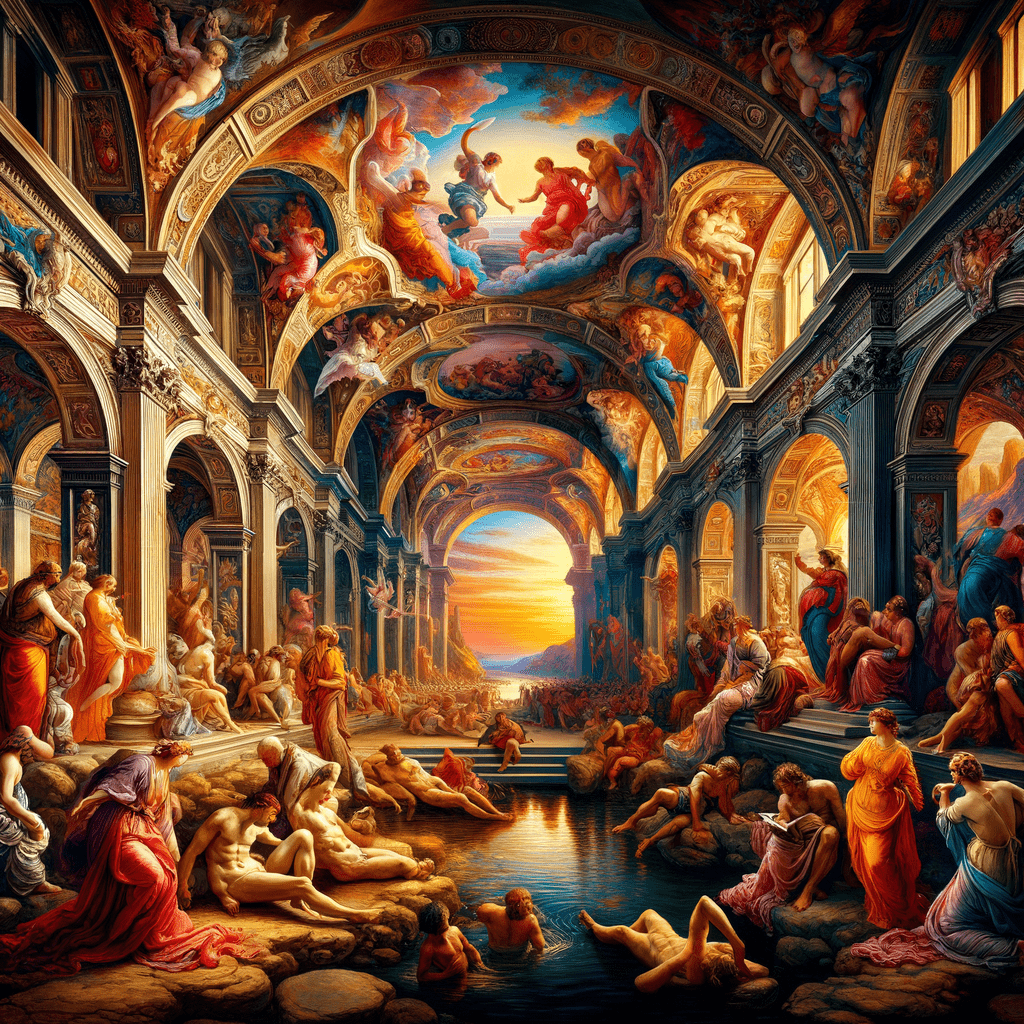Rediscover the history of tempera, one of the oldest painting techniques, used by artists like Botticelli to create works with enduring colors that remain unchanged over time.
Tempera is one of the oldest and most durable painting techniques, used by world-renowned artists like Sandro Botticelli to create artworks that have stood the test of time. This article will explore the history, characteristics, and significance of tempera, offering a comprehensive overview of this fascinating artistic technique.
Origins and History of Tempera
The tempera has ancient origins, dating back over 2000 years. Initially used by the Egyptians and later by the Greeks and Romans, this technique has traversed the centuries while maintaining its popularity.
During the Middle Ages, tempera became the predominant painting technique in Europe, used for the creation of religious icons and illuminated manuscripts. The use of tempera reached its peak during the Renaissance, when artists like Botticelli, Michelangelo, and Leonardo da Vinci used it to create immortal masterpieces.
Characteristics of Tempera
Tempera is a painting technique that uses pigments mixed with a binder, usually egg yolk, to create a durable and long-lasting paint. The main characteristics of tempera include:
- Duration: Tempera works are known for their longevity, maintaining vivid and unchanged colors over time.
- Quick drying: The tempera dries quickly, allowing artists to work with precision and detail.
- Versatility: Tempera can be used on a variety of surfaces, including wood, canvas, and paper.
- Transparency: Tempera offers unique transparency, allowing artists to create layers of color and intricate details.
The Tempera in the Renaissance
During the Renaissance, tempera was the preferred technique for many artists in the creation of both sacred and secular artworks. Sandro Botticelli, one of the greatest masters of the Renaissance, used tempera to create masterpieces such as “The Birth of Venus” and “Primavera.”
Tempera allowed Renaissance artists to achieve unparalleled precision and detail, making it possible to create works of art of extraordinary beauty and complexity.
Case Study: “The Birth of Venus” by Botticelli
“The Birth of Venus” is one of the most famous paintings by Sandro Botticelli, created around 1485. This masterpiece, painted with tempera on canvas, depicts the goddess Venus emerging from the waters on a shell.
The choice of tempera allowed Botticelli to achieve vivid colors and intricate details, which helped make this painting an icon of Renaissance art. The durability of tempera has ensured that the colors and details of “The Birth of Venus” have remained unchanged for over five centuries.
Tempera in Contemporary Art
Despite the advent of new painting techniques, tempera continues to be used by many contemporary artists. Its versatility and durability make it a popular choice for creating modern works of art.
Artists like Andrew Wyeth and George Tooker have used tempera to create artworks that combine traditional techniques with contemporary themes, demonstrating that this ancient painting method still has much to offer to the art world.
Statistics and Data on Tempera
According to a study conducted by the Metropolitan Museum of Art, over 70% of Renaissance artworks housed in museums around the world were created using tempera. This statistic highlights the significance and widespread use of this painting technique over the centuries.
Furthermore, a survey conducted among contemporary artists revealed that over 40% of them still use tempera for creating their works, demonstrating the ongoing relevance of this technique in modern art.
Conclusion
In conclusion, tempera is one of the oldest and most enduring painting techniques, used by world-renowned artists to create artworks that have stood the test of time. Its longevity, versatility, and ability to keep colors vivid and unchanged make it an ideal choice for artists of any era.
The history of tempera is a testament to the resilience of color and the ability of art to transcend time. Whether it’s Renaissance masterpieces or contemporary artworks, tempera continues to be a highly relevant and important painting technique.
For more information on tempera and other painting techniques, visit the Metropolitan Museum of Art website.




